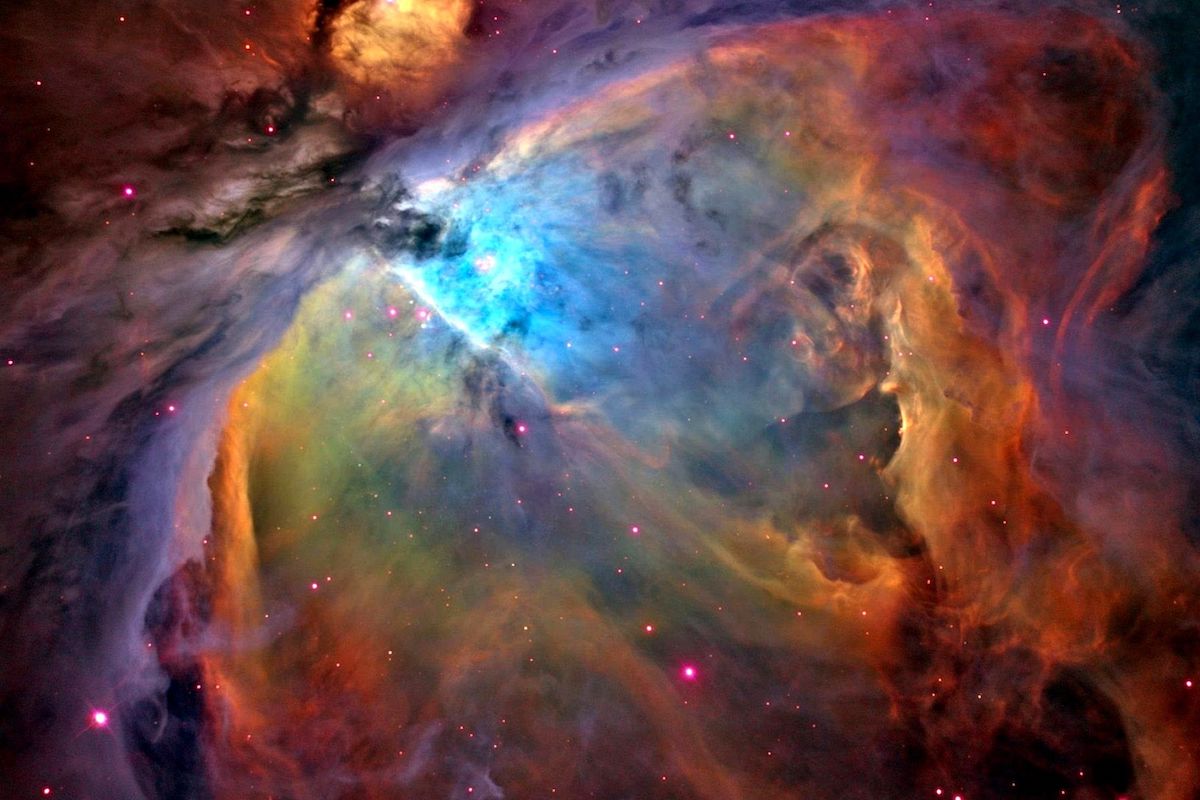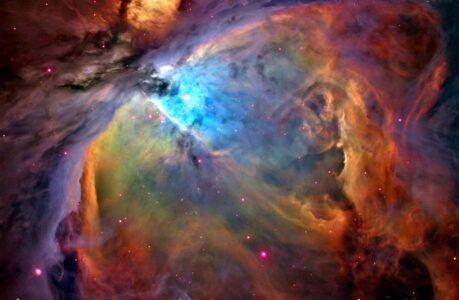Fast focal ratio telescopes, also known as fast or wide-field telescopes, are gaining popularity among amateur and professional astronomers alike. But what exactly are they, and why are they becoming so popular?
A telescope’s focal ratio, also known as the f-number, is a measure of its speed. A fast focal ratio telescope has a lower f-number, which means it has a wider field of view and gathers more light in a shorter amount of time. This makes it ideal for capturing images of faint objects in the sky, such as galaxies, nebulae, and star clusters.
One of the main advantages of fast focal ratio telescopes is their ability to capture images of deep-sky objects in a shorter amount of time than slower telescopes. This is because they gather more light in a shorter period, allowing astronomers to capture more data and produce higher quality images.
Fast focal ratio telescopes are also ideal for astrophotography, as they allow photographers to capture wide-angle images of the night sky. This makes them perfect for capturing images of constellations, the Milky Way, and other celestial objects that require a wider field of view.
However, fast focal ratio telescopes also come with some drawbacks. One of the main drawbacks is that they have a narrower depth of field, which can make focusing on objects more difficult. Additionally, they may also have more optical aberrations, which can affect image quality.
Despite these drawbacks, fast focal ratio telescopes are still an excellent choice for both amateur and professional astronomers who are looking to capture high-quality images of the night sky. Whether you’re interested in astrophotography or just want to explore the wonders of the cosmos, a fast focal ratio telescope can help you do so with stunning clarity and detail.
The benefits of a fast focal length
Fast focal length lenses are lenses that have a wide aperture, allowing them to gather more light in a shorter amount of time. They are highly sought after by photographers who want to capture sharp, well-exposed images in low-light conditions. In this article, we’ll explore the benefits of fast focal length lenses and how they can improve your photography.
Improved low-light performance
One of the primary benefits of a fast focal length lens is its ability to perform well in low-light conditions. This is because the wide aperture allows more light to enter the lens, enabling faster shutter speeds and lower ISO settings. This results in images that are sharper and have less noise, even in dimly lit environments.
Shallow depth of field
Another benefit of fast focal length lenses is their ability to create a shallow depth of field. This is because the wide aperture creates a narrow plane of focus, which can be used creatively to isolate a subject from its surroundings. This effect is especially pronounced in portrait photography, where a shallow depth of field can be used to blur the background and draw attention to the subject’s face.
Increased subject separation
Fast focal length lenses can also create greater separation between the subject and the background. This is because the narrow plane of focus created by the wide aperture makes the subject stand out more, while the blurred background creates a sense of depth and dimensionality. This effect is particularly useful in wildlife and sports photography, where the subject needs to stand out from a cluttered background.
More creative control
Fast focal length lenses provide photographers with greater creative control over their images. The ability to control the depth of field, subject separation, and low-light performance allows photographers to capture images that are not possible with slower lenses. This can lead to more unique and visually interesting photographs.
In conclusion, fast focal length lenses offer many benefits to photographers. They provide improved low-light performance, shallow depth of field, increased subject separation, and greater creative control. If you are a photographer looking to improve your craft, investing in a fast focal length lens is a great place to start.
The drawbacks of fast focal length
While fast focal length lenses provide several benefits for photographers, they also come with a few drawbacks that should be considered before investing in one. In this article, we’ll explore some of the drawbacks of fast focal length lenses and how they can impact your photography.
Cost
Fast focal length lenses tend to be more expensive than their slower counterparts due to their wider aperture and the precision required in their construction. This can be a significant barrier to entry for many photographers, especially those who are just starting.
Heavier and larger size
Fast focal length lenses tend to be larger and heavier than slower lenses, which can make them more challenging to handle and carry around. This can be a particular issue for photographers who need to travel light or who shoot for extended periods.
Reduced depth of field
While a shallow depth of field can be a benefit of fast focal length lenses, it can also be a drawback. The narrow plane of focus can make it challenging to keep all parts of the subject in focus, especially when shooting at wide apertures. This can result in images that are not as sharp as desired.
Softness at wide apertures
Fast focal length lenses may also exhibit softness at wide apertures, which can impact image quality. This is because the wider aperture can make it more challenging to maintain sharpness across the entire image. However, this issue can often be addressed by stopping down the aperture slightly.
Chromatic aberration
Fast focal length lenses may also exhibit chromatic aberration, which is a type of distortion that occurs when different wavelengths of light are focused at different points. This can result in images that have colour fringing, which can be distracting and difficult to correct in post-processing.
Why is it called a fast focal length
A fast focal length lens is so named because it has a wide maximum aperture, which allows it to gather more light and operate at faster shutter speeds than a lens with a narrower aperture. The term “fast” refers to the speed at which the lens can capture images, as opposed to the speed of its focus mechanism.
The aperture of a lens is measured in f-stops, which represent the ratio of the lens’s focal length to the diameter of its aperture. A lower f-stop number indicates a wider aperture, while a higher f-stop number indicates a narrower aperture. For example, a lens with a maximum aperture of f/1.4 is considered “faster” than a lens with a maximum aperture of f/2.8, because it can capture more light and operate at faster shutter speeds.
A fast focal length lens is particularly useful in low-light situations, where it can help to capture sharp and well-exposed images without the need for high ISO settings or long exposure times. It can also be used to create a shallow depth of field, which can be useful in portrait and product photography, as well as to create interesting bokeh effects in the background of an image.
In summary, a fast focal length lens is called “fast” because of its wide maximum aperture, which allows it to gather more light and operate at faster shutter speeds than a lens with a narrower aperture. This can be particularly useful in low-light situations and for creating a shallow depth of field.
Examples of Fast focal Length telescopes
Fast focal length telescopes are designed to have a short focal length and a wide aperture, which allows them to capture more light and provide a wider field of view than other telescopes. They are ideal for capturing images of deep-sky objects and for astrophotography. Here are a few examples of fast focal length telescopes:
Celestron 8″ f/2.0 Rowe-Ackermann Schmidt Astrograph
This telescope has an 8-inch aperture and a focal length of just 400mm, making it an ideal choice for astrophotography. It features a built-in corrector to eliminate spherical aberration and a wide field of view of 70mm.
Sky-Watcher 10″ f/4.9 Newtonian Reflector Telescope
This telescope has a 10-inch aperture and a focal length of 1200mm, making it a great choice for capturing detailed images of deep-sky objects. It features a parabolic mirror to minimise aberrations and a large secondary mirror to provide a wide field of view.
Explore Scientific 102mm f/7 Essential Series ED Apochromatic Refractor
This telescope has a 102mm aperture and a focal length of 714mm, making it a great choice for astrophotography and observing deep-sky objects. It features an apochromatic lens to minimise chromatic aberrations and a wide field of view of 82mm.
Meade Instruments 12″ f/8 ACF Optical Tube
This telescope has a 12-inch aperture and a focal length of 2438mm, making it a great choice for capturing detailed images of planets and other objects in our solar system. It features an advanced coma-free design to eliminate aberrations and a wide field of view of 77mm.
Orion 10″ f/3.9 Newtonian Astrograph Reflector Telescope
This has a 10-inch aperture and a focal length of 391mm, making it an ideal choice for capturing wide-angle images of the night sky. It features a parabolic mirror to minimise aberrations and a wide field of view of 53mm.
These are just a few examples of fast focal length telescopes that are available on the market. When choosing a telescope, it is important to consider your needs and budget, as well as the type of objects you want to observe or photograph.

